These products promise to dramatically improve the sound quality of phones and similar devices by completely bypassing their internal DACs and amps. Here, we test a collection of these new products, compatible with iOS devices: the Apogee One, CEntrance Mini-M8, Oppo HA-2 and V-MODA Vamp Verza. Every one of these products sounds dramatically better than my iPhone 5S by itself.
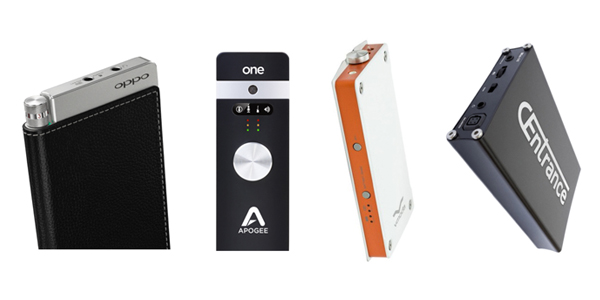
Portable Headphone DAC/Amp Roundup: Apogee One, CEntrance Mini-M8, Oppo HA-2, V-MODA Vamp Verza
- Several new headphone amps now sport built-in DACs that can communicate digitally with iOS and Android devices, bypassing the low quality DACs and amps that typically come with tablets and phones.
- The amps tested here all work with both iOS and Android, with prices ranging from $299 to $599.
- All of these devices sound dramatically better than my iPhone 5S alone driving my Shure SE-425 IEMs.
- The Apogee One also serves as a portable 24 bit 96 kHz 2-channel recording device, with a built in microphone and inputs for musical instruments.
The last several years have witnessed the introduction of a new type of device: the portable headphone amp with a built in DAC capable of digitally connecting to iOS and Android devices. Before this development, we were able to buy very nice portable headphone amps to use with portable players, but were forced to deal with the crappy DACs most all of them housed. I used a Headroom Total BitHead for years, but always wanted to get around the DAC in my 160 GB iPod Classic or phone. Now, I can. The first device of this type I know of was the Fostex HP-P1, but now several have been released. Secrets recently reviewed the new Sony PHA-3. John Johnson just did a teaser review of the Oppo HA-2, also reviewed here. I collected four relatively new headphone amps I had not seen reviewed by many hifi publications: The Apogee One, the CEntrance Mini-M8, the Oppo HA-2 and the V-MODA Vamp Verza. I made inquires to get more similar amps to test, but not all manufacturers responded to our request for review samples. Every one of these devices has different pros and cons, and which one is “best” for you will depend critically on what you want in a portable amp.
Apogee ONE
DC power supplies charge to
iPod touch, iPhone or iPad
Optional battery operation for
remote recording on iPad (2 AA batteries not included)
USB 2.0 audio with
24-bit/96kHz A/D and D/A conversion
Built-in omnidirectional condenser microphone
(mic stand adapter included)
2 Analog Inputs:
XLR microphone and 1/4” instrument connector on breakout cable
Built-in omnidirectional condenser microphone
2 simultaneous inputs (instrument + built-in or external mic)
Mic preamp with up to 62dB of gain
2 Analog Outputs:
1 1/8” stereo output for headphones or powered speakers
A/D and D/A conversion:
24 bit/96kHz
iOS version:
6 or greater
Connection:
Lightning connector
Power supply or
two AA batteries required
MSRP:
$349
Company:
CEntrance Mini-M8
Resolution:
24 and 16 bit
Compatible sample rates:
192, 176.2, 96, 88.2, 48 and 44.1 kHz, DSD
Asynchronous
USB audio
Frequency Response:
20 Hz-20 kHz
THD+N:
0.004%
Maximum output power:
165 mW, both channels driven
Inputs:
iOS USB-B, USB Audio USB-A, Toslink optical/coax digital on a 1/8” phono connector.
Battery Life:
11 hours
Dimensions:
127 x 80 x 22 mm
MSRP:
$599
Company:
Oppo HA-2
Frequency response:
20 Hz-200 kHz
Recommended headphone impedance:
16-300 Ohms
Maximum output power:
300mW@16 Ohms, 220 mW@32 Ohms, 30 mW@ 300 Ohms
Output impedance:
0.5 Ohms
Outputs:
Stereo headphone and line out
Inputs:
3.5mm stereo analog, Asynchronous USB-A (iOS) and USB micro-B for USB OTG and computers
Resolution:
32, 24 and 16 bit
Supported sampling rates:
44.1 – 384 kHz, DSD 64,128 and 256
DAC:
ESS Sabre32 Reference ES9018-K2M
Battery:
3000 mAh Lithium Polymer
Battery Life:
13 hours for analog sources, 7 hours for digital sources
Recharge time:
90 minutes with quick charger
Size & Weight:
157 x 68 x 12 mm, 175 g
MSRP:
$299
Company:
V-MODA Vamp Verza
Power:
150mW x 2 (@32 ohm) USB Mode, 130mW x 2 (@32 ohm) iOS Mode
Battery:
2200mAh Lithium-Ion w/ over-charge protection circuit
Output:
3.5mm analog and digital output port
Signal to Noise Ratio:
> 90dB
Distortion:
< 0.05% (@50mW)
Headphone Resistance Compatibility:
> 16 Ohms
Input:
USB-A (Apple iOS), USB micro-B (Android or Computer)
Play Time:
7 hours (lo-gain)
Full Charge Time:
~5 hours
Dimensions:
133.5 x 70 x 17mm
Weight:
190g
MSRP:
$598
Company:
SECRETS Tags:
Portable Headphone, DAC/Amp Roundup, Apogee One, CEntrance Mini-M8, Oppo HA-2, V-MODA Vamp Verza, Portable Headphone Review, Headphone Review
In this review, I test them in the manner in which they were designed to be used: with an iPhone 5S and an Apple iPod Classic 160 GB as a source and Shure SE-425 IEM headphones. This includes the measurements. I used my Spectra Plus FFT software to create 24 bit 192 kHz, 24 bit 96 kHz and 16 bit 44.1 kHz WAV files of the required test tones, converted these to Apple Lossless MP4 format, and then played those files to do the measurements. I used a 24-ohm resistor as the test load, similar in impedance to typical IEMs, with a 1 mW test tone power (enough to drive most sensitive IEMs to clipping). I measured using my normal M-Audio Profire 610 sound interface and Spectral Plus FFT software. All music files were 16 bit 44.1 kHz Apple Lossless files made directly from CDs I own using MAX 0.8 ripping and transcoding software with OSX, or from transcoded downloaded lossless FLACs. I also listened to some high-res files using the Onkyo HF player app. I tried 24 bit 88.2 kHz (Daft Punk’s Random Access Memories) and 24 bit 96 kHz files (John Faddis’ Remembrances) Apple Lossless files. No compressed audio was ever used during listening tests. HF player can also upsample to 24 bit 192 kHz if desired (and even play DSD files for DACs that can decode that signal). I didn’t have anything more than 24 bit 96 kHz to try, but I did try the upsampling with mixed results. All of the amps tested here worked with both my iPhone 5S running iOS 8.3, and with my Apple iPod Classic 160 GB. Several of the devices don’t guarantee operation with the iPod Classic, but that’s because of Apple’s extensive testing and certification program to get the “iOS compatible” approval. Apple won’t let manufacturers advertise compatibility with these old devices, even if the products work.
In this review, I test them in the manner in which they were designed to be used: with an iPhone 5S and an Apple iPod Classic 160 GB as a source and Shure SE-425 IEM headphones.
The Apogee ONE is the most unique device reviewed here. Unlike all the other products in the review, the Apogee ONE is not primarily a headphone amp/DAC. It was designed as a portable recording device for musicians by Apogee Digital, a powerhouse name in professional electronics. The ONE is a full-featured 2-channel mixer, with a built-in microphone, and dedicated input for connection to musical instruments or other microphones. Oh, and by the way, it has a very good headphone output. The ONE records and decodes at 24-bit 96 kHz, with full control through the Apogee Maestro app, downloadable free from the Apple App store. Apogee makes two versions of the ONE: the device tested here is designed for iOS and Mac OSX use. Another version of the ONE works only with OSX, and is $100 cheaper. Unlike all the other devices reviewed here, the ONE does not work with Android devices.
The build quality of the ONE is excellent, with a cast aluminum case and high quality switches and connectors throughout. A large volume knob on the front maps to the iOS volume control. LED level indicators are on the front for recording and monitoring. The ONE is powered by either an included DC adapter or by two AA batteries. The device will charge your iOS device through the input cable when the AC power adapter is connected. A lightning cable is included with the device, but the connector on the ONE for this cable is proprietary so you’ll be stuck with the cable that comes with the device. Another breakout cable for input is included with a XLR mic input and a ¼” instrument input. It even comes with a microphone stand adapter. It does not have adjustable gain for the headphone output and there is no bass-boost.
Secrets Sponsor
I really enjoyed listening to the ONE. While it does not have as high a sampling rate as some of the other devices tested here, the sound quality was excellent. It was the quietest device tested, with very good measured results (see below). The sound quality was very clean and transparent, with good (but not exceptional) bass performance. As with all the amps tested here, I could clearly hear the differences between the microphones used to record the interview of Giorgio Moroder on Daft Punk’s “Giorgio by Moroder.” While all the amps revealed these differences, the ONE and the Oppo made it most clear and obvious. In fact, had a hard time deciding what sounded better, the ONE or the Oppo HA-2. Their sonic character was very similar, with exceptional retrieval of detail, very clean and crisp dynamics, and a wide, but somewhat flat soundstage. I found no issues without having a gain switch on the ONE. The range of the volume control was very wide, so the ONE worked fine with both my Shure SE-425 IEMs and my Sennheiser HD-600s (I didn’t listen much with the 600s, but I wanted to be sure the ONE would drive them successfully). Battery life was very good. I did all my testing on a single set of batteries. While a rechargeable battery like all the other amps in this roundup is nice, good old-fashioned AAs have their advantages. If they’re flat, all you need to do is put in a new set. If one of the other amps is flat, you have no choice but to recharge, which isn’t much of an option if the plane is boarding right now.
I did not test the recoding functionality of the ONE while I had it, but I could see this being a draw. Many audiophiles (including some of our Secrets team) are musicians, and I’m sure many of you like to go to live concerts. The ONE would give you the opportunity to do high quality live recording (with permission, of course) as well as have an excellent headphone amp and DAC. In terms of convenience of use, the ONE is a little bit large in size, and the included lightning cable is a bit long and bulky for use as a portable headphone amp, but really it turned out to be pretty easy to deal with in everyday use. I think that if the recording functionality would be of use to you, the ONE would be an excellent choice. If you’re never, ever going to use the recording feature, then there may be better choices for you in this roundup.
The measured performance of the ONE was very good. I used 24 bit 96 kHz test tones for all these measurements.


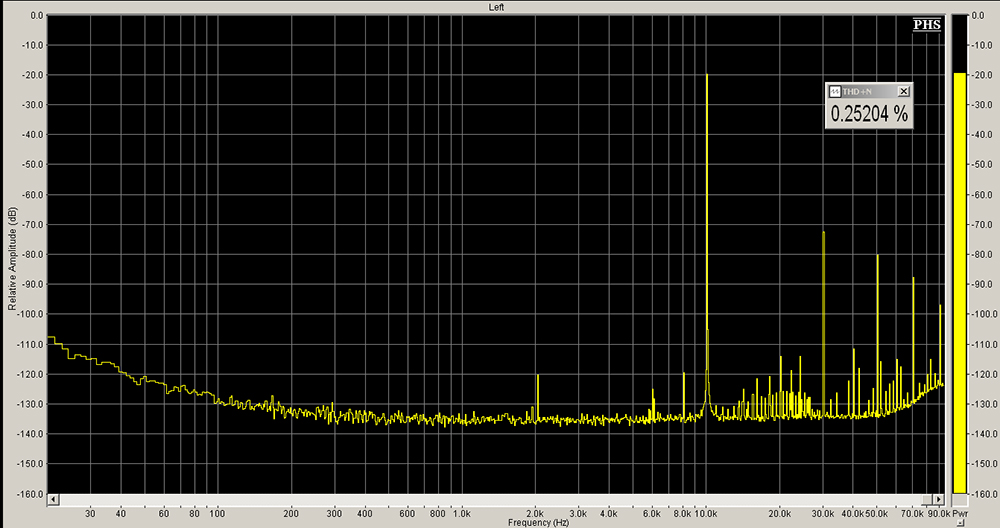
At 50 Hz, the distortion was vanishingly low at 0.005%, climbing to a still very low 0.025% at 1 kHz. At 10 kHz, the distortion was a bit higher at 0.25%, the only non-exceptional measurement in the bunch. The test tones were all -10 dBFS.
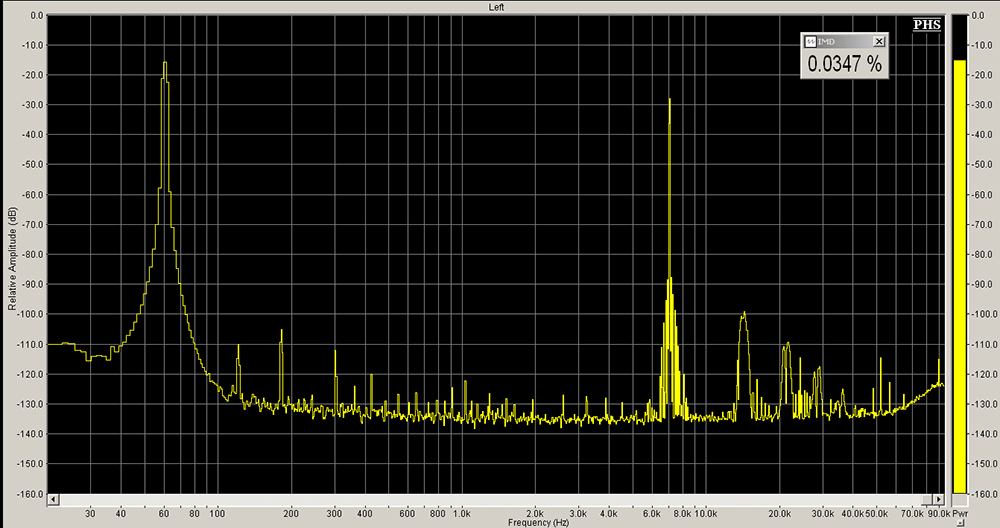
Intermodulation distortion was measured at 0.035%, again an excellent result.

As expected the frequency response was flat as a board up to about 30 kHz, before rolling off slowly at the 48 kHz Nyquist cutoff.
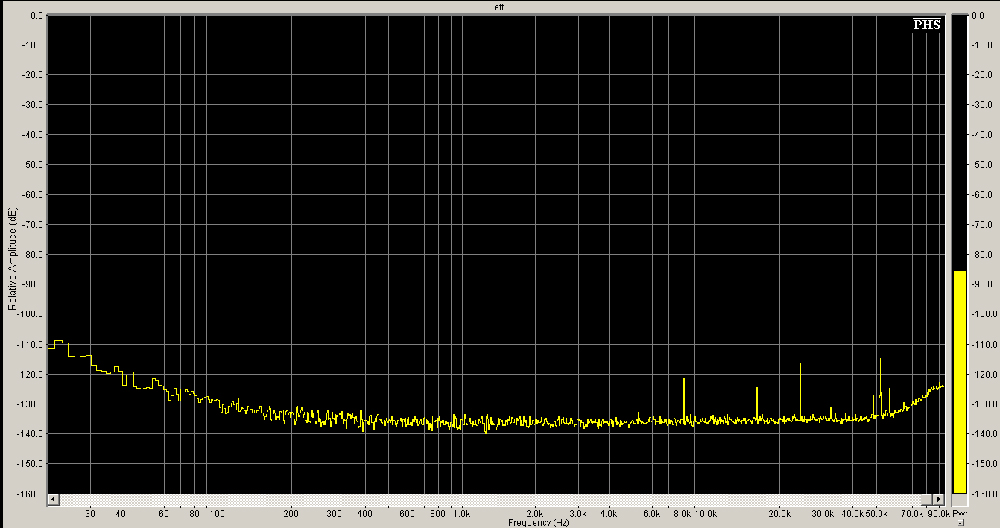
To measure noise (an issue with very sensitive IEMs) I measured the output of all the amps with the audio player paused. The ONE was the quietest amp in the test with the noise floor about 136 dB down from a full scale narrow band test tone, although all of the tested amps were within 6 dB of each other. It was almost impossible to hear this level of background noise with my SE-425s, but in a quiet room you could just hear the hiss with the player paused.
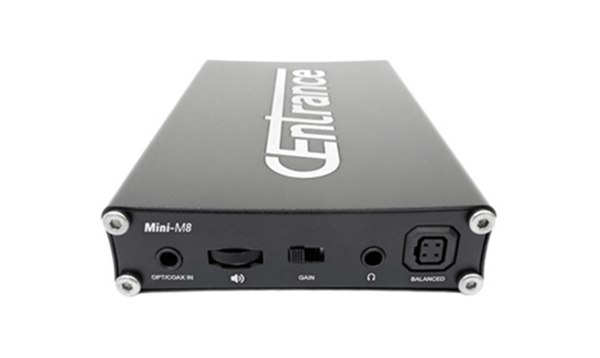
The CEntrance Mini-M8 has the most extensive pedigree of any of the amps tested here. CEntrance has been making headphone amps and DACs for years. In fact, their well regarded Hifi-M8, one of the first high-res DACs available for iOS devices. The Mini-M8 is a thinner, lighter version of the Hifi-M8, better suited to mobile use. The Mini-M8 is the only amp here with a balanced headphone output. The internal amp circuitry of the Mini-M8 is entirely balanced. At the output you have a choice of a normal 1/8” phono plug or a 4 pin RSA/ALO style balanced connector. I didn’t test this output, but I’m sure it would sound just a little bit better than the single ended output if you have the proper cable for your headphones. Also on the front panel is a 3 position gain selector switch, a manual potentiometer for volume control and a 1/8” Toslink optical or coax digital input. The Mini-M8 does not have any sort of digital volume control. The amp has two connectors on the back panel for digital inputs: A USB-A connector dedicated to iOS devices, and a USB-B connector for USB audio capable devices. These inputs actually go to separate DACs. The iOS only connector will only work at 16 bit 48/44.1 kHz. To get the high res 24 192 kHz and DSD decoding capability, you’ll need to use the USB-B connector. With an iPhone or iPad, this means you’ll also need the $29 Apple Camera Connection Kit. I used the iOS input with my iPod Classic, and the CCK with my iPhone 5S to get high res playback capability. The back panel also has a DC input for charging the internal lithium ion battery with an included AC adapter, and a selector switch to choose the digital input. The selector switch is also the power switch: middle is off; selecting either USB input turns the device on. Like the ONE, the Mini-M8 will only charge the iOS device when the amp is connected to the AC power supply.
Secrets Sponsor
The Mini-M8 is well built, but it’s clear most of the effort and money went inside the box rather than outside. The amp has a simple extruded aluminum case with screwed-on end plates with exposed fasteners. Size-wise, the Mini-M8 was on the large side for this test. The width and depth were about the same as my phone, but the amp was fully double the thickness of the smallest amp in the test, the Oppo HA-2.
The Mini-M8 is also the most expensive amp in this test, at $599 MSRP. Good thing it’s the best sounding, then. From the first listen it was clear that the headphone amp section of the Mini-M8 was the best in this test. The bass performance in particular, was exceptional. No need for any lame bass-boost here. The power delivered by the CEntrance amp really took control of my Shure SE-425s, getting them to deliver bass impact and depth I didn’t really know they were capable of. None of the other three amps could come close in this regard. The soundstage was also clearly the most three dimensional of all the amps, although getting the most out of this required a relatively quiet listening environment even with the isolation of IEMs. I can only imagine what adding a balanced cable could do. Retrieval of detail was also excellent, but to my ears not quite up to the razor sharp clarity of the HA-2 or ONE. This could be simply due to the soundstaging and bass performance adding other information, though. The more flat sound of the HA-2 and ONE might have just made it seem as if there was more detail. The Mini-M8 also responded well to the upsampling feature of the Onkyo HF player app, where upsampling to 24 bit 192 kHz did seem to improve things. When listening to the iOS dedicated input with my iPod classic, the performance was not quite as good. The bass performance was still there from the amp stage, but some of the detail, clarity and three dimensionality with the high-resolution input was missing. The Mini-M8 is said to decode DSD (likely through conversion to PCM), but I did not test this capability.
In terms of convenience, the Mini-M8 makes you work a little for your sound quality. The main issue is the cabling. You need the Apple CCK in addition to a full size USB A to B cable to get high res playback. Even with an A to B adapter rather than a cable, this is a relatively bulky setup. Thanks to the larger case, however, battery life is excellent. If what you want is the best portable sound quality you can get, then the Mini-M8 is the best choice in this review. Yes, it’s expensive, but you get what you pay for in terms of sound quality. If you’re willing to live with the size of the amp and cabling setup necessary, you will not be disappointed.
The measurements of the Mini-M8 were interesting. While good, they were not the best here. And remember, all amps were tested with the identical test setup one after the other, with the same source, same test files, and without even touching the test setup. The test results shown are from the high-resolution input with 24 bit 192 kHz test tones. I did not test the dedicated iOS input.
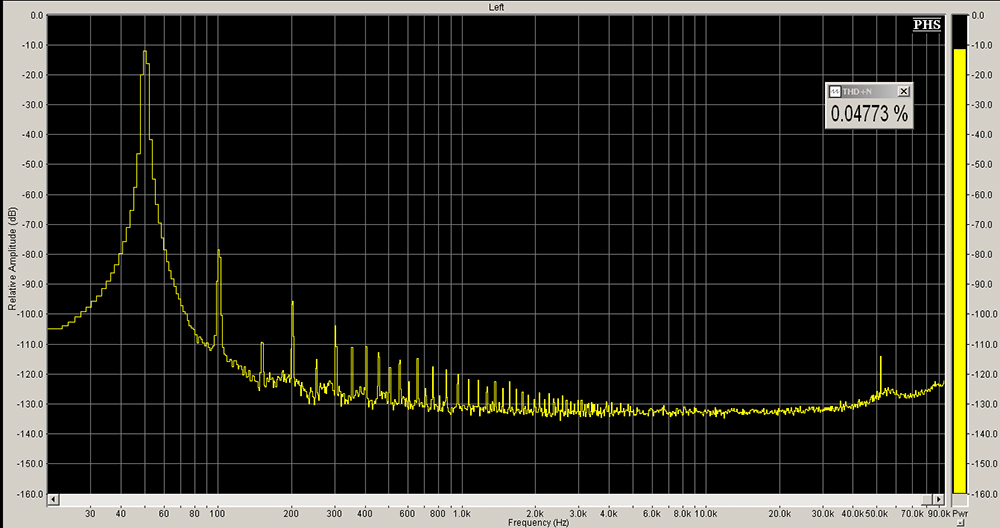
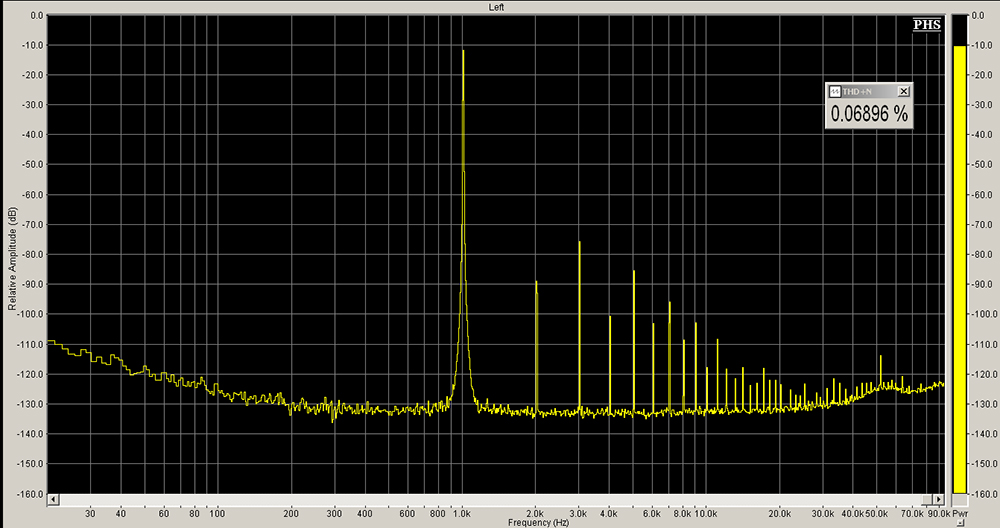
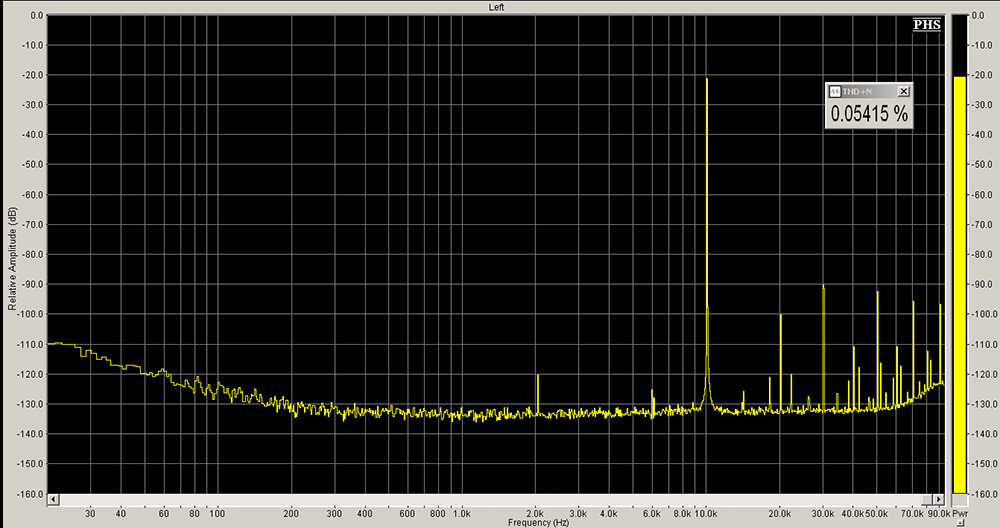
The measured distortion (THD+N) at 50 Hz was 0.048%, 0.069% at 1 kHz and 0.054% at 10 kHz. These are very low, but not the best distortion measurements tested in this review.

The IMD measurement was 0.0078%, again very low but not the best.

Frequency response was flat to 20 kHz, with a very slow roll-off to the 96 kHz Nyquist cutoff. This should be partially responsible for the excellent sound of the Mini-M8, with this slow roll off minimizing ringing of transients. The Mini-M8 was the only amp tested here to implement a “slow roll” anti-aliasing filter.
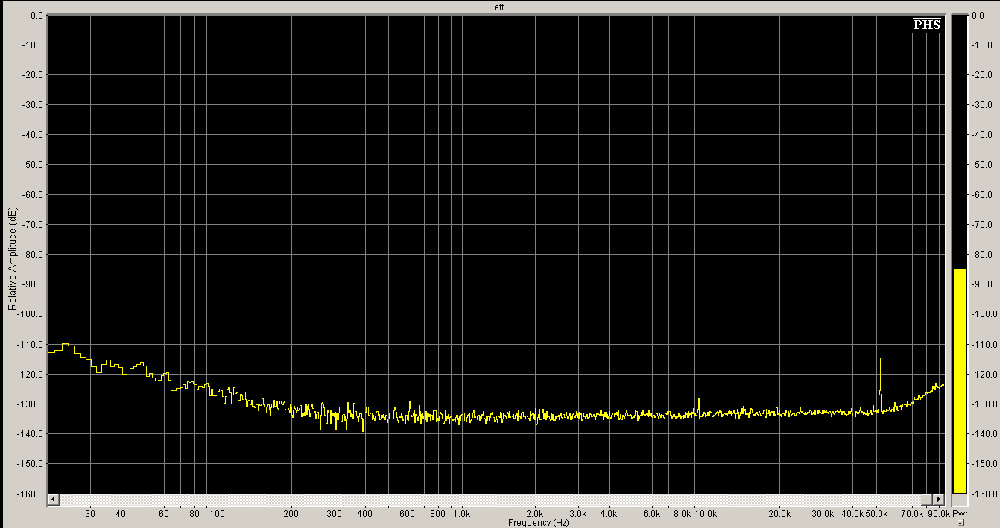
With the source paused, the Mini-M8 had a noise floor about 134 dB down from a 0 dBFS narrow band tone. In a very quiet room it was possible to hear just a little bit of hiss through the very sensitive Shure SE-425s.
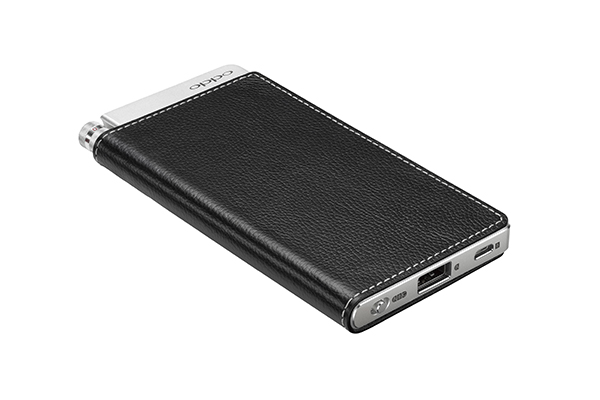
The Oppo HA-2 was recently reviewed by John Johnson at Secrets a few weeks ago. Here, I can compare it to the competition, and review it with a portable source and IEMs as it’s most likely to be used. The HA-2 definitely wins the prize for looks in this review. The HA-2 is absolutely beautifully made. It looks like a product that was designed in Cupertino, and made in the same factories as other iDevices. I’m sure the latter is true. The case is silver finished matte aluminum that looks identical to the case of the Macbook Pro on which I’m typing this review. The main body of the case is wrapped in real black leather with white contrast stitching. Of all the devices tested here, the HA-2 is the most satisfying to hold and operate, which is definitely a plus given it’s also the least expensive in the review. The HA-2 is a very slim amp, with a top mounted analog volume/power knob. A side mounted button checks the battery level, which is displayed on 4 green LEDs peaking through tiny holes machined in the side of the aluminum case. This button also toggles between charging or not charging the attached source after a press of several seconds. Also present are two toggle switches for gain (with two positions) and bass boost. On the top, two 1/8” phono ports connect to your headphones or a line out device, where the volume control is not implemented. The line out also serves as an analog line in. The bottom of the device has a USB-A connector for iOS devices and a USB Micro-B connector for computers or Android devices with USB OTG capability. A bottom-mounted toggle switch selects between the three inputs. Unlike all the other devices in this test, the Oppo will connect to pretty much any iOS or Android device, does not require the Apple camera connection kit to get full performance, and will decode pretty much any digital signal up to 32 bit 384 kHz, plus DSD 64, 128 and 256. The HA-2 uses the Sabre Reference ES9018-K2M DAC, a mobile optimized version of Sabre’s well-regarded 32 bit DACs. The performance specs of this DAC are a little worse than their top-shelf chips, but still are very, very good. In addition to the analog volume control, the HA-2 also maps your iOS device volume control to the digital volume control of the DAC. Since the DAC is 32 bit and most source material is no more than 24 bit, this gives you an at least 256 level digital volume control with no sound quality penalty.
In use, the convenience of the HA-2 is unmatched. It has every feature you could imagine. It has good rechargeable battery life, only bested by the Mini-M8 in this test, is the smallest amp tested (it’s almost exactly the same size as my iPhone 5S), it can charge your phone from its battery even when it’s not attached to AC power and always connected immediately to any device I tried. Even though it’s not listed on the Oppo website as compatible, the HA-2 worked just fine with my iPod Classic. The Oppo even comes from the factory with a very nice, short lightning to USB-A cable, a USB micro-A to Micro-B cable for Android devices, and a USB-A to Micro-B cable for charging with the included high-current quick charger that can bring the HA-2 to 70% capacity in 30 minutes or full charge in 90 minutes. This was not true with the other devices in this test, which either came with inconveniently long cables or no suitable cables. It was a joy to use, and turned out to be the device I kept reaching for whenever I had a business trip.
The fact that I reached for it is also a sign that the sound quality was very good. I placed it second in this test for sound quality behind the Mini-M8, and just ahead of the Apogee ONE, mainly because the Oppo decodes more digital signals than the ONE. For lower bit rate signals, the HA-2 and the ONE sounded very similar. The Oppo had exceptional resolution and ability to extract detail, just like the ONE. Compared to the Mini-M8, the soundstage was equally wide, but lacked the three dimensional space of the more expensive amp. The bass slam and impact was fine, but also not up to the same level as the Mini-M8. Of course, the Oppo is half the price. With the ESS Sabre DAC, it’s clear the digital side of the HA-2 is excellent, so the difference between the Oppo and the Mini-M8 is likely down to the analog output stages. All was not perfect with the sound, though. The Oppo was the only amp that could be sensitive to interference by my phone. Every so often, I could hear noise from my phone leaking into the audio signal (that crazy, science fiction Morse code sound you hear sometimes when someone has a wireless microphone transmitter and their phone in the same pocket when giving a speech). This happened rarely, and could be eliminated by putting the phone into Airplane mode, but it was annoying on occasion. I did not notice this effect with any of the other amps in the test. Unlike the Mini-M8, the HA-2 did not respond well to upsampling with the Onkyo HF player app. I definitely preferred the sound at native bit rate, with the upsampled tracks displaying some unpleasant digital glare and harshness. I also initially thought the HA-2 had a problem with hiss (a high noise floor) as others on the intertubes have noticed. More careful testing showed this not to be the case. When first turned on before any music is played, there is a relatively strong background hiss with the HA-2. However, if you play a track and decoding starts, then press pause, the noise level is much lower. You can still hear some hiss at this point, but as I show below, the HA-2 was mid-pack in terms of noise floor in this comparison test.
In terms of measurements, the HA-2 was the clear champ of this test.
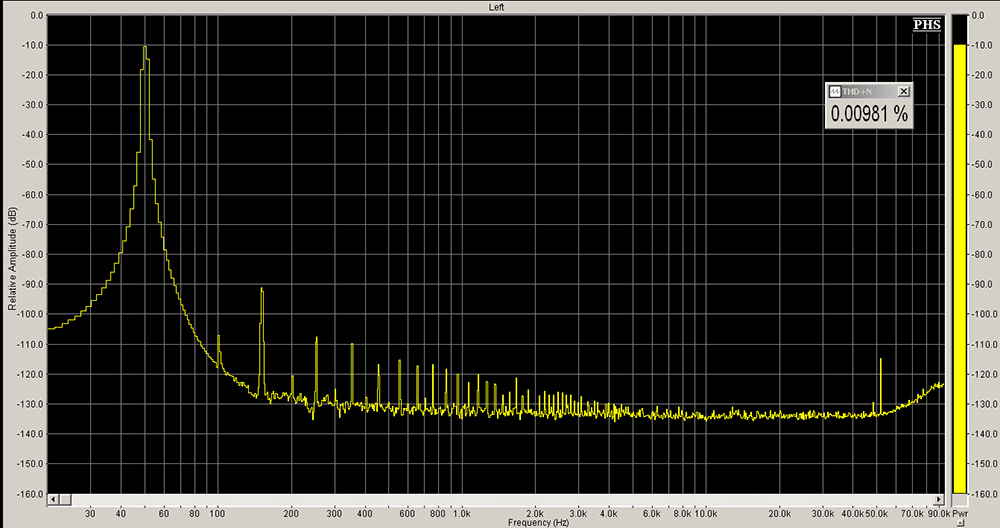
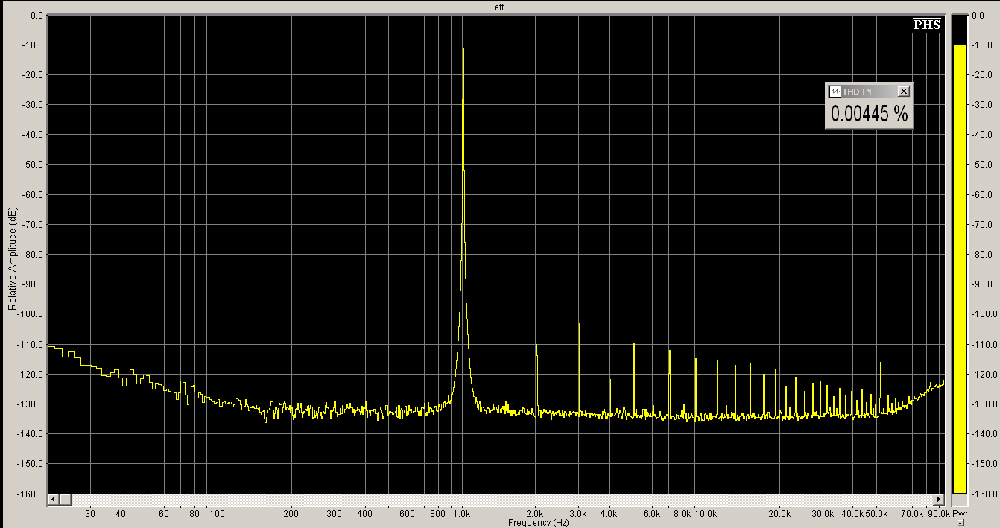

THD+N numbers at 50 Hz, 1 kHz and 10 kHz were 0.010%, 0.004% and 0.011%, either the best in the test or close, depending on frequency.
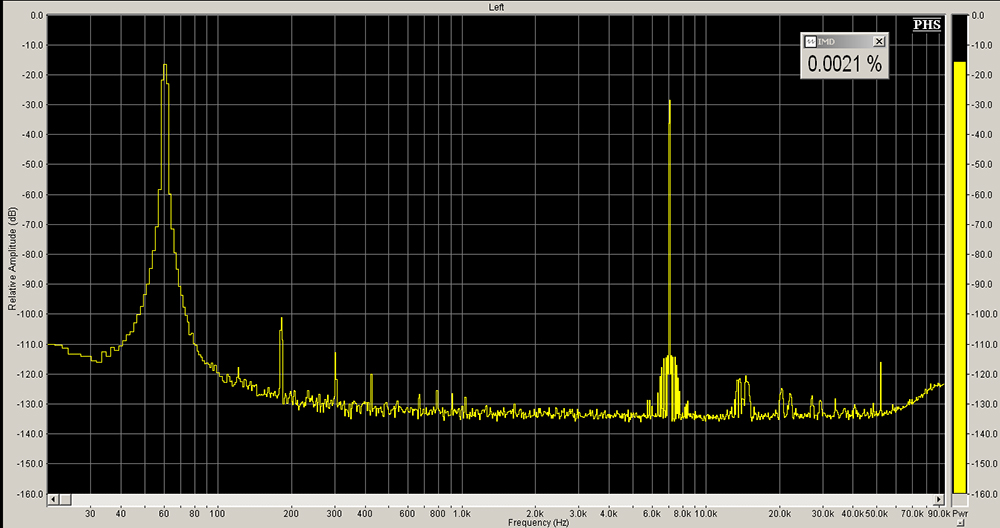
IMD was also clearly the lowest at 0.002%.
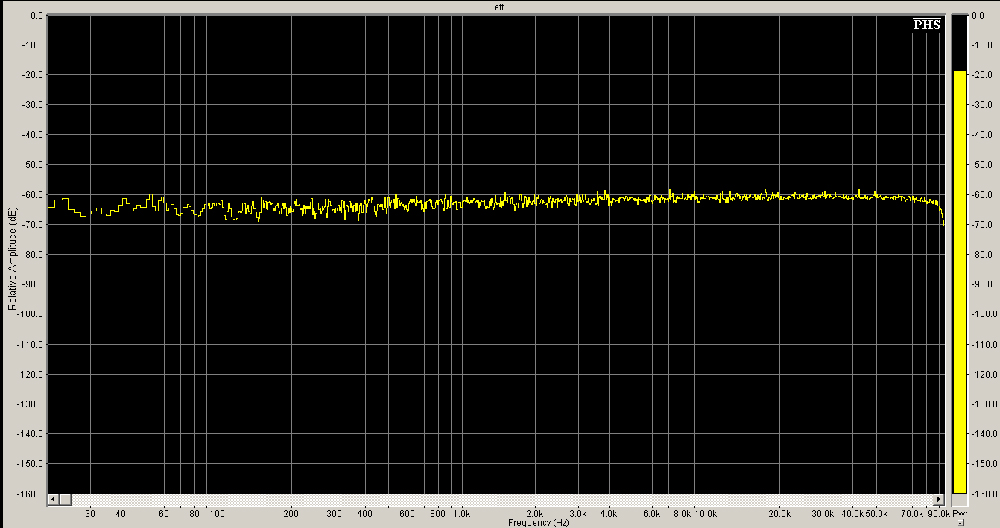
Frequency response was flat to the limit of the test setup. All these measurements were made with 24 bit 192 kHz test files.

The noise floor was about 135 dB below a narrow band 0 dBFS test tone, slightly better than the Mini-M8, and just a little worse than the Apogee ONE, the quietest amp in the test.
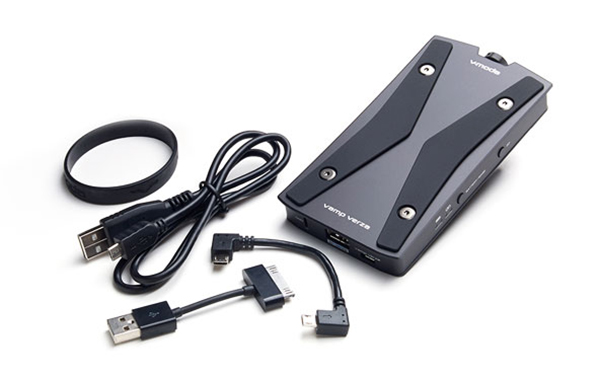
The V-MODA Vamp Verza is the oldest amp in this test, having been on the market now for just over two years. V-MODA specializes in delivering HiFi gear that not only sounds good, but is actually fashionable. All their products have a very edgy, science fiction look to them and the Vamp Verza is no different. It’s available in both matte black and white and orange, and you even have the option of having a custom image engraved on the top panel. V-MODA even makes machined aluminum phone cases that can dock with the Vamp Verza’s top mounted rail system. But be forewarned, these cases are a bit behind the times in terms of availability for newer phones, and have nosebleed inducing prices. Even the packaging is fashionable, with a leatherette strap with chrome spikes holding the box closed. The amp has a manual potentiometer for volume and power control, plus a selector switch to choose the iOS device or Android device input, and the operating mode for the iOS input (Mac computer, iOS with phone charging and iOS without phone charging). No optical digital or line in is provided, but there is a digital line out in addition to the headphone out. Two side-mounted buttons control 3D DSP processing, bass boost and check battery life. Charging is done through the Micro USB input connector. Size wise, the Vamp Verza is second smallest to the HA-2. In terms of build quality, I’d put the HA-2 ahead, but the futuristic styling of the Vamp Verza is unique. Like the Mini-M8, each input (iOS or Android) gets its own DAC. Unfortunately, both are limited to 16 bit 48 kHz. While the AKM DAC used for the iOS input is 24 bit 96 kHz, the Vamp Verza will only connect to the phone at 16/48. This is the amp showing its age in this fast moving segment.
In terms of sound quality, the Vamp Verza was comparable to the HA-2 and the ONE when decoding 16 bit 44.1 kHz tracks. The Oppo and Apogee amps had a little better detail retrieval and a little larger soundstage, but the race was close. Unfortunately, the Vamp Verza can’t decode high bit rate tracks, so that’s where the other amps pull ahead. Not that the Vamp Verza is bad, however. It’s WAY better than my iPod or iPhone by itself. In use, the Vamp Verza was the second most convenient amp to use here, even without the mating phone case. It’s compact and easy to deal with. I did have a couple of usability issues with it. On a couple of occasions, it would not connect to my phone, requiring multiple power cycles and connecting and disconnecting of the cable to get it to work. It also had a weird battery life issue. While playing, the battery life was advertised, but if you left the Vamp Verza turned off sitting on the shelf, the battery would go flat on a timescale of about a week, requiring a full 5-hour recharge. No other amp had this issue. If you already have a Vamp Verza and don’t listen to high res files, there’s no reason to rush out and buy a replacement. However, if you’re in the market for a new amp, the Vamp Verza really can’t justify it’s $598 price tag compared to the competition reviewed here. An update in digital performance is certainly in order.
In terms of measurements, the Vamp Verza’s performance was in line with the competition.
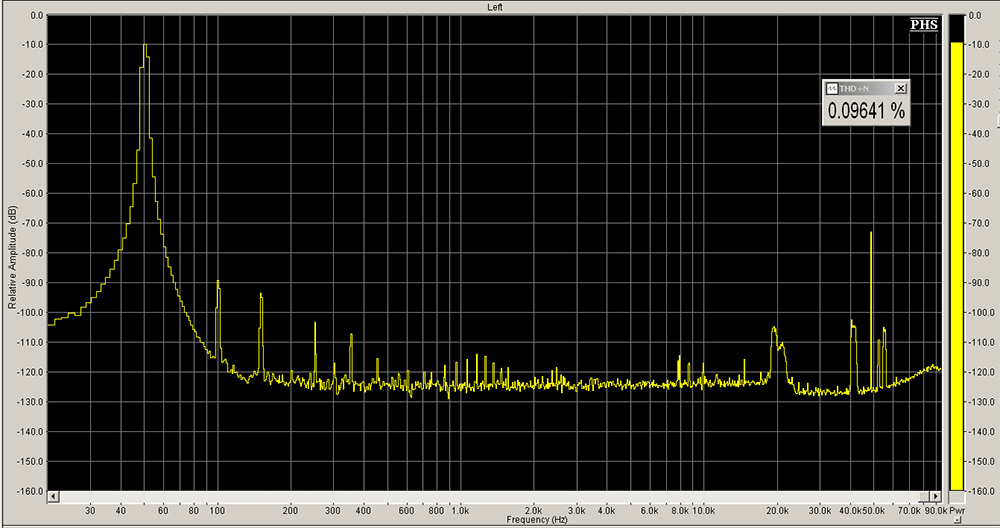
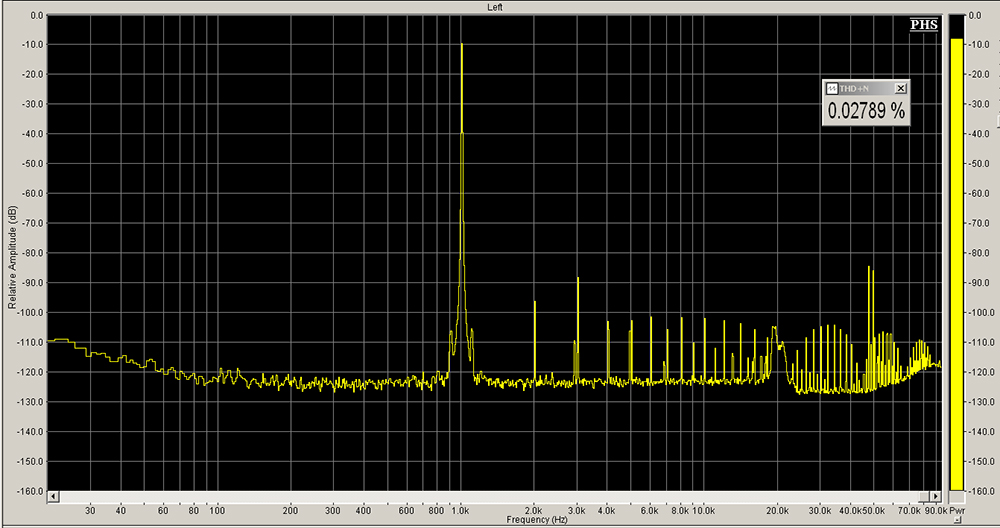
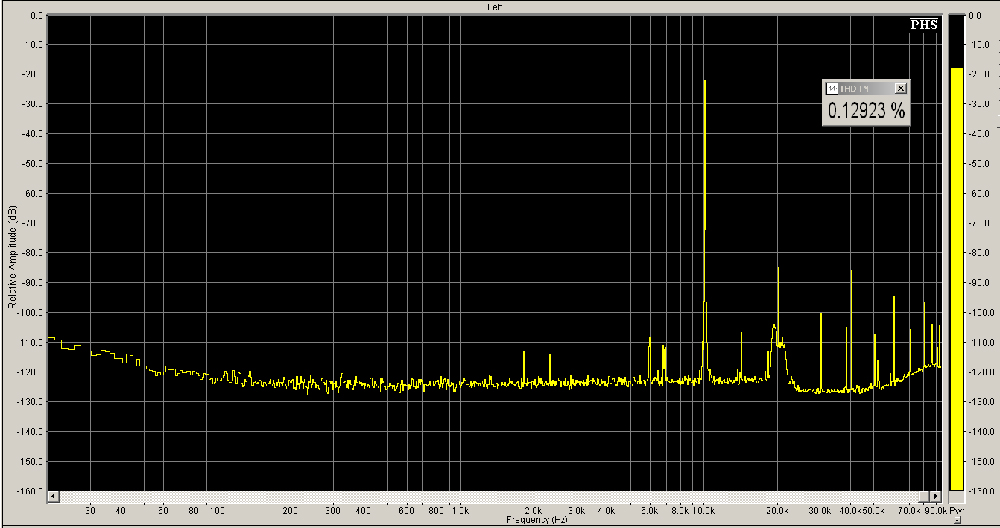
THD+N at 50 Hz, 1 kHz and 10 kHz was 0.010%, 0.028% and 0.129% respectively.
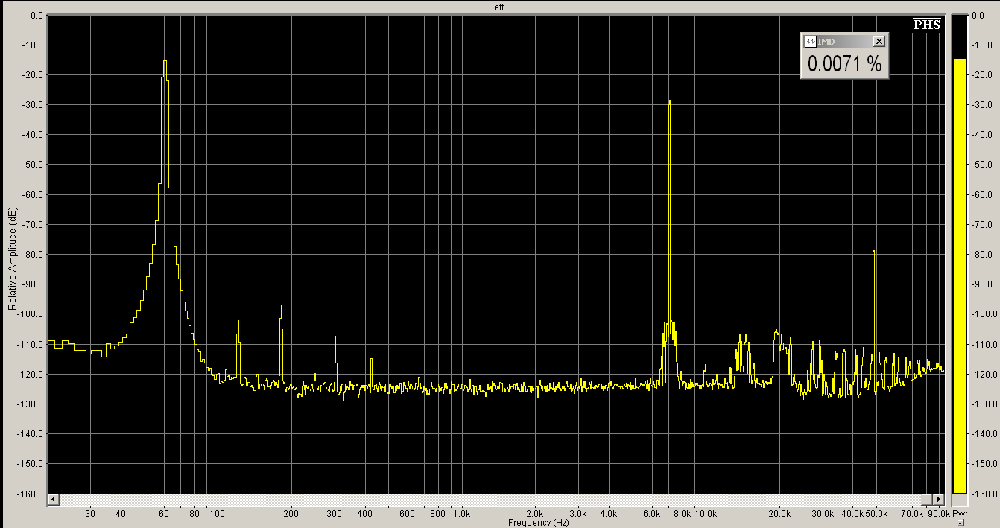
The IMD was a low 0.007%, in fact the second lowest in the test behind the HA-2.
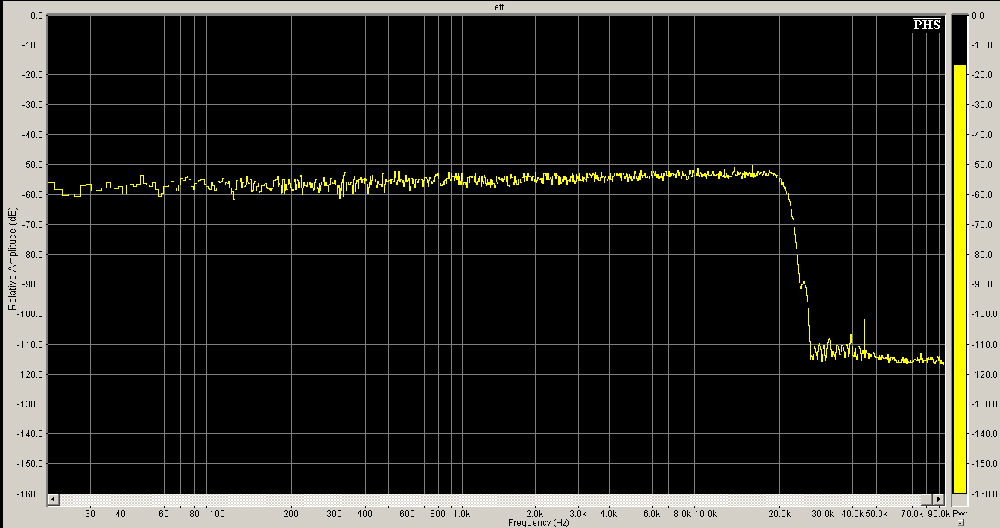
Frequency response was flat to 20 kHz, with a sharp drop past that due to the 48 kHz maximum sample rate of the amp. I used 16 bit 44.1 kHz test tones for these tests.
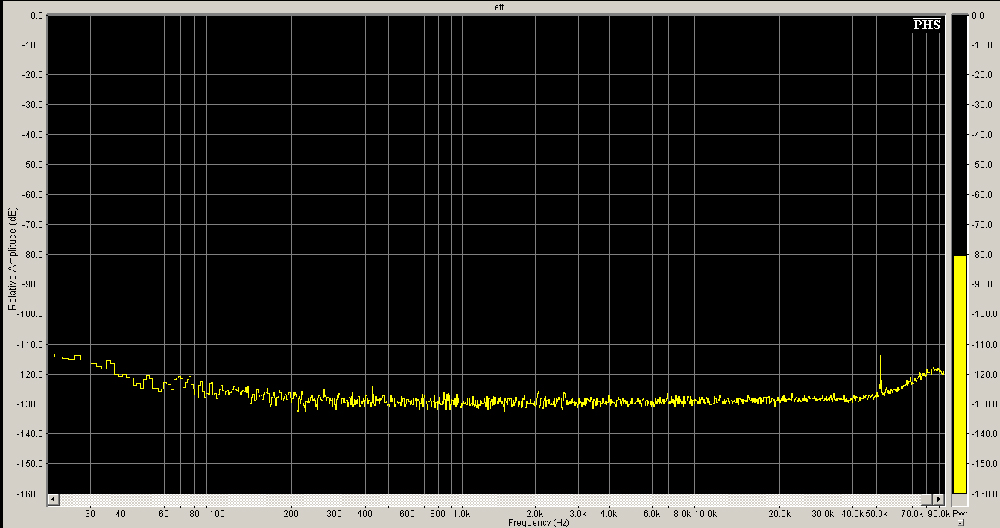
With the player paused, the noise level was 130 dB below a 0 dBFS narrow band test tone. This was the noisiest amp in the test but still only 6dB worse than the best in the test, the Apogee ONE. Nothing in these test results is problematic, but does reveal the age of the Vamp Verza’s design.
To be honest, any of these amps would improve the sound quality of your phone iPod significantly. Which is best? Well, that depends. If you like the idea of live recording on the go, the Apogee ONE is unmatched, while still offering a very good headphone output. It’s limited to 24 bit 96 kHz, and sacrifices a little convenience lacking a rechargeable battery and being a little large, however. It’s also iOS only, lacking Android support. The CEntrance Mini-M8 has the best sound quality of any amp tested here, even offering a balanced output. It’s a bit large, and requires a bulky cable setup to get the most out of it with an iOS device. It’s also expensive at $599 MSRP. The Oppo HA-2 is small, beautiful and convenient and offers excellent sound, if not quite up to the level of the Mini-M8. It’s also the cheapest amp tested here at only $299, manufacturer direct. The V-MODA Vamp Verza is the only amp I really can’t recommend. At $598 and only decoding signals up to 16 bit 48 kHz, it’s just too long in the tooth to be competitive any more. What about me personally? I bought the HA-2 for myself. The convenience and low price won out over the sound quality of the Mini-M8. If this was my only headphone amp which I would use for both mobile listening and at work at my desk, I think I would have gone for the Mini-M8. But I have a Schiit Asgard 2 amp and Bifrost DAC on my desk at work. For portable use only, the siren song of convenience and cost won me over, and so the HA-2 is staying.



